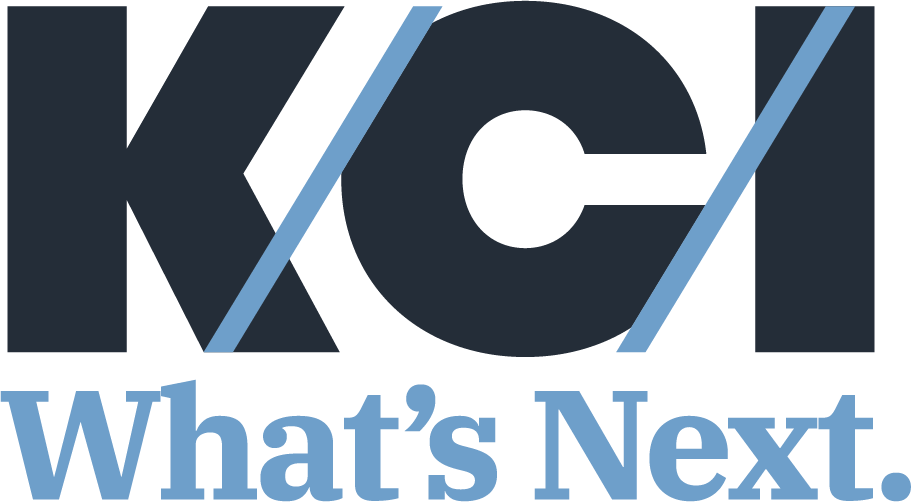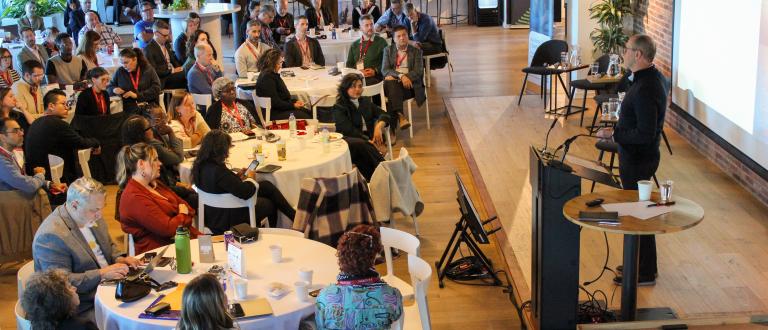Charities and nonprofits contribute to addressing some of the most pressing social and economic inequities. But having a social mission doesn’t mean an organization is intentionally and meaningfully incorporating equity, diversity and inclusion (EDI) principles into its work. This is especially true if the organization is small, its leadership is white, and its mission isn’t related to EDI.
This is one of the major findings from Shifting power dynamics: Equity, diversity and inclusion in the nonprofit sector, the first comprehensive study of what Canadian charities and nonprofits are doing to advance EDI within their organizations. This project, generously supported by Scotiabank and other partners, was an initiative of the Equitable Recovery Collective, a group of nonprofit organizations working to advance equity in nonprofit sector policy, foster a more equitable funding environment, and build sector-wide capacity to advance equity in nonprofit organizations.
The study provides key insights into our sector’s commitment to EDI through an exploration of the following topics:
- how organizations are integrating EDI into their work
- the role of equity working groups in advancing EDI
- the factors that enable and hinder organizations as they seek to apply EDI principles
- the role of governance and operational leadership in advancing EDI
In addition to research highlights, this post includes recommendations for organizations to improve their EDI practices. We firmly believe that all organizations, regardless of their mission, have a responsibility to advance equity and address systemic discrimination and racism. Funders have a unique role to play so we include specific recommendations for them.
We encourage all nonprofit leaders to review the findings from this study, as well as the recommendations, and use them to advance EDI within their organizations. Share this study with your networks. Encourage your peers to reflect on EDI, why it matters, and ways to advance this crucial work. Together, we can create a more inclusive charitable and nonprofit sector and more equitable communities.
LISTEN TO OUR PODCAST ABOUT THE STUDY
WHAT THE STUDY TELLS US
In this section, we highlight some of the key findings from the survey. But we urge you to read the report for details and additional findings.
Research methodology:
These results are based on responses from 1,655 charity and nonprofit leaders, who completed the survey between August 18 and October 31, 2022. Respondents were asked a series of questions about their organization’s policies and procedures related to equity, diversity, and inclusion, its human resources practices, whether it collects equity-related data about the people it serves and how it uses this data, potential enablers and barriers to applying EDI principles in the organization’s work, and their opinions related to equity, diversity, and inclusion. For the purpose of analysis, organizations were grouped into three categories: white-led organizations, BIPOC1-led organizations, and organizations led by individuals from other underrepresented groups (e.g., people with disabilities, from the 2SLGBTQIA+ community).
1 The acronym “BIPOC” stands for Black, Indigenous and People of Colour. We recognize this is a controversial term that is justly criticized for masking the diverse experiences and perspectives of the populations it includes. Unfortunately, given the size of the sample, we must group responses from Black, Indigenous and racialized leaders together to have sufficient statistical power to highlight differences by organizational leadership.
Research highlights:
While most nonprofit leaders support equity, diversity and inclusion, far fewer pursue it with deep intentionality.
Nonprofit leaders widely support the principles of equity, diversity and inclusion, see their value, and believe they are acting in accordance with them. Most organizations are also taking at least some steps to put their beliefs into action. However, many do not appear to be deeply or enduringly committed to EDI. For instance, roughly two fifths of organizations have not conducted any form of equity audit (i.e., reviewed any aspect of their operations through an equity lens). Similarly, while strong majorities of organizations highlight EDI principles in their policies and follow equity-enhancing recruitment practices to some degree, significantly fewer have stand-alone EDI policies and/or regularly evaluate the effectiveness of their recruitment practices. Small and mid-sized organizations and white-led organizations are the least likely to be intentional in their pursuit of EDI.
Organizations led by Black and Indigenous people and those from other underrepresented groups do more to advance EDI, even though they serve some of the highest-need communities, experience increased expectations, and face greater barriers.
The identity of organizational leaders affects every aspect of EDI practice covered by the survey. BIPOC-led nonprofits and organizations led by those from other underrepresented communities consistently engage in more equity-enhancing practices. They also engage in more high-impact practices. For example, they are more likely to have conducted some form of equity audit, to have policies and procedures detailing their approach to EDI, to implement more equity-related measures in their hiring and development practices, and to track the effectiveness of their activities over time.
The BIPOC-led organizations that responded to this study are also much more likely to have programs or services intended to serve Black and other racialized communities, women or girls, migrants or asylum seekers, and low income people. Since the onset of the pandemic, BIPOC-led organizations and organizations led by those from other underrepresented communities are more likely to have seen EDI-related expectations increase, both from those they serve and from funders. These organizations also experience greater barriers and are more likely to face challenges such as lack of financial resources or access to knowledge. In spite of this, they consistently engage with EDI in more substantial ways and to see greater value in this work.
Leadership and management structures such as equity working groups matter.
Leadership support, staff buy-in, and board engagement are the most frequently cited enablers of EDI practices. While the equity characteristics of organizational leadership (i.e., BIPOC vs. other underrepresented vs. white) clearly matter, so too do management structures like equity working groups. These groups serve as a means of organizing, implementing, and monitoring EDI practices and have almost as pervasive an impact as leadership characteristics.
Organizations with equity working groups are substantially more likely to engage in equity-enhancing practices of all kinds. For instance, they are more likely to have conducted equity audits, to have stand-alone EDI policies, to take more measures to increase the equity of staff and volunteer recruitment and retention, and to track the effectiveness of these measures. Organizations with leadership drawn from Black and Indigenous communities and other under-represented groups are more likely to have equity working groups, as are larger organizations.
Organizations are taking measures to enhance the equity of their human resources practices, but are less likely to implement measures that have greater impact, particularly if they are white-led.
Enhancing the equity of human resources practices in the nonprofit sector is critical, particularly because the sector’s workforce comes disproportionately from equity-seeking communities.2 Most organizations have practices that enhance the equity of their staff recruitment, retention, and development practices. However, the most common measures, such as having standardized hiring and performance-review processes or equating experience with formal qualifications, are more consistent with good hiring practices rather than being specifically intended to advance equity or diversity. Measures with more impact, such as intentionally recruiting people from underrepresented groups, ensuring that interviewee pools include candidates from underrepresented populations, and requiring recruiters to have equity training, are less common. Moreover, these practices are least likely to be implemented by white-led organizations.
2 Seventy-seven percent nonprofit workers are female, 47% are immigrants, 29% are from visible minorities and 5% are Indigenous. See E. Jensen, Diversity is our Strength: Improving Working Conditions in Canadian Nonprofits. Imagine Canada, 2022.
Less than half of organizations use equity-related information about the people they serve.
While four fifths of organizations gather equity information about the people they serve (e.g., age, sex, racial identity, etc.), about forty percent of those gathering this information don’t use it. Overall, this means that slightly over half of organizations don’t make use of equity information about those they exist to serve. Compared to organizations that are using equity information to inform program development and revision, impact evaluation, strategic planning, and funder reporting, these organizations are at a significant disadvantage with regard to implementing practices that would benefit those they serve. Organizations with equity working groups are significantly more likely to collect and use virtually all types of equity information, as are organizations whose leaders come from BIPOC and other underrepresented communities.
Funders have a key role to play in advancing EDI by supporting Black, Indigenous, racialized-led organizations and other organizations committed to advancing EDI.
Organizations are divided on the impact funders have on their ability to apply EDI principles in their work, with roughly equal proportions seeing funder support as a barrier and an enabler. BIPOC-led organizations are substantially more likely to see lack of funder support as a barrier. However they, along with organizations led by those from other underrepresented backgrounds, are also somewhat more likely to see funder support as an enabler, which highlights the potential of funders to drive change.
Organizations are less divided when it comes to the specific characteristics of funding. Over half see lack of long-term and core funding as barriers, and both BIPOC-led organizations and organizations led by those from other underrepresented groups are more likely to see these as barriers. The role of funders is particularly pertinent in the current context, with about half of organizations reporting that funder expectations related to EDI have increased since 2020. This is particularly true for BIPOC-led organizations.
WHAT CAN ORGANIZATIONS DO TO ADVANCE EDI?
All charities and nonprofits, including smaller ones with fewer resources, can help advance equity. The process begins internally, by recognizing the importance of this work and committing to prioritizing it. It bears repeating: EDI isn’t relevant only to the organizations that have EDI-related missions. Regardless of their mission, all organizations have a responsibility to advance equity and address systemic discrimination and racism. The survey shows that focus, intentionality, and buy-in are the biggest enablers for organizations seeking to advance EDI. Shifting mindsets and dedicating time and resources are critical to making meaningful progress. Below are some suggestions for starting your organization’s EDI journey.
Hold discussions and education sessions
The first step is to have discussions with your staff and board about EDI and how it relates to your organization’s vision and mission. Consider the populations you serve, which are likely not a homogenous group. Also consider this work in the context of your broader community, which is likely diverse. Talk with other sector leaders about the value of EDI and how it can become part of your organization's governance, management, and relationships. Educate your board, staff and volunteers about the aspects of EDI that are most relevant to your work. This can be done in many ways: taking courses, attending webinars and/or conferences, hosting speakers, reading books, listening to podcasts.
Conduct an equity audit
Once you’ve got the conversation going, a good first activity is to review what your organization is already doing to advance EDI. Does your organization already collect equity-related information? Does it have policies and practices in place to embed EDI into its work? Based on these survey results, how does your organization compare to your peers? Guiding principles are needed along with equity audits; identify the underlying principles that are going to guide this work. It is essential that this process is genuine and rooted in intentionality. Meaningful and long-lasting change requires reflection and an evolution of organizational culture and practices.
Develop a plan
Use the information collected during the equity audit to reflect on what your organization could do to improve its EDI practices. Develop specific goals and identify the actions you will take to achieve them. Some actions can be implemented in the short term, while others will take longer. Organizational resources will affect how quickly you can move, but they shouldn’t be used as an excuse for doing nothing. Be realistic about the time and change required. This is real work and it will take time. Organizations need to have a vested interest in the outcomes they want to achieve and the change they want to see. Developing a plan will keep your organization accountable as it takes this journey.
Create a structure to implement the plan and track your progress
The survey shows that having an equity working group of some sort is a key driver of change. An equity working group is an intentional mechanism that can steward change within your organization, track progress, and keep your team accountable. Depending on your organization, this group could be comprised of board members, staff members, or a mixture of both. If your organization doesn’t have such a group, engage with your network to find organizations that do to discuss the process and benefits. If your organization has an equity working group, consider sharing your learnings with your peers.
THE ROLE OF FUNDERS IN ADVANCING EDI WITHIN THE NONPROFIT SECTOR
Funders have enormous power and privilege, which they can use to advance EDI in the sector and society. Of course, like other organizations, funders should review their own practices from an equity lens and develop and implement plans to improve. However, funders can also play a key role in supporting nonprofit organizations to advance equity.
One of the most important things funders can do is recognize and fund organizations that already have exemplary EDI practices. This would send a strong signal to the sector about the importance of EDI. Funders could also provide funding to those with strong track-records in relation to EDI specifically for the purpose of sharing their knowledge and experience with others. Finally, funders should engage in conversations with grantees that are already doing EDI work to better understand what they are doing and how they are doing it. This is an area where many funders could learn a great deal from their grantees.
Given that lack of financial resources is the most commonly cited barrier to applying EDI principles, funders should consider providing financial support to nonprofits specifically for the purpose of embedding EDI into every level of their organizations, including their programs and services. Funders might also consider asking grantees to set and report on equity-related goals. This can be an excellent way to drive change. However, expecting organizations to do more without giving them the support and resources they need would be setting them up for failure. If funders want their grantees to do more in relation to EDI, they need to provide them with the support to make this possible.
Finally, funders should consider providing dedicated support to organizations led by Black, Indigenous and racialized people and those that provide programs and services specifically designed for equity-deserving communities. After all, the major goal of EDI practices is to transform society, not just nonprofits!
LISTEN TO OUR PODCAST ABOUT THE STUDY
ACKNOWLEDGEMENTS
The authors would like to thank the members of the Equitable Recovery Collective for their contributions to this blog post and to the project as a whole.
This project was proposed and advocated by the Network for the Advancement of Black Communities (NABC).
Imagine Canada and the Equitable Recovery Collective gratefully acknowledge the financial support of:
Lead Partner
![]()
Sector Partner

Knowledge Partners





